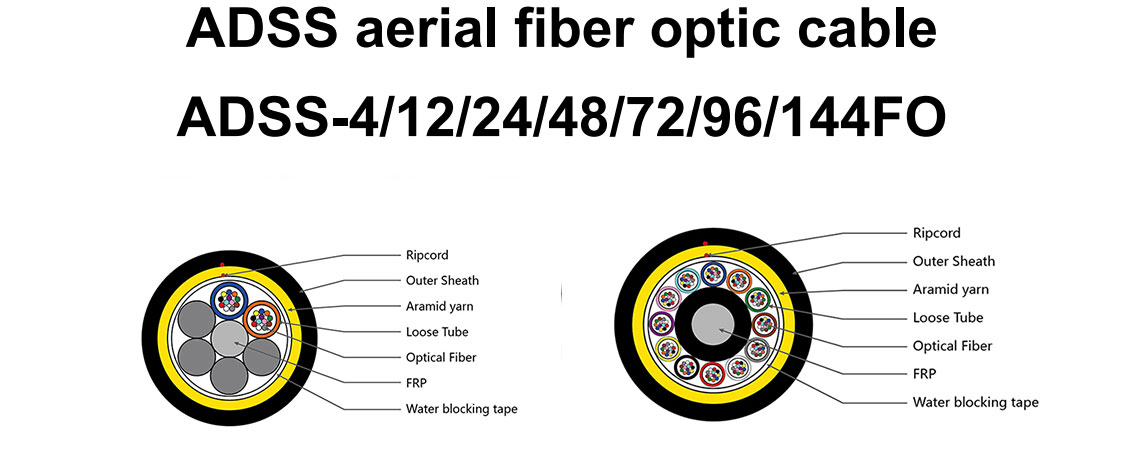The ADSS optical fiber cable works in an overhead state supported by two points with a large span (usually hundreds of meters, or even more than 1 kilometer), which is completely different from the traditional concept of "overhead" (the post and telecommunications standard overhead suspension wire hook program, an average of 0.4 meters has a 1 pivot). Therefore, the main parameters of ADSS optical fiber cable are in line with the regulations of electric overhead lines.
1. Tension allowed (MAT/MOTS)
It refers to the tension on the optical cable when the total load is theoretically calculated under the design weather conditions. Under this tension, the fiber strain should be ≤0.05% (layer twist) and ≤0.1% (central tube) without additional attenuation. In layman's terms, the excess length of the optical fiber is just "eaten" at this control value. According to this parameter, meteorological conditions and controlled sag, the allowable span of optical cable under this condition can be calculated. Therefore, MAT is an important basis for the calculation of sag-tension-span, and it is also an important evidence for characterizing the stress-strain characteristics of ADSS cable.
2. Rated tensile strength (UTS/RTS)
Also known as ultimate tensile strength or breaking force, it refers to the calculated value of the sum of the strength of the bearing section (mainly counting spinning fibers). The actual breaking force should be ≥ 95% of the calculated value (the breakage of any component in the cable is judged as cable breakage). This parameter is not dispensable, and many control values are related to it (such as tower strength, tensile fittings, shockproof measures, etc.). For the optical cable industry, if the ratio of RTS/MAT (equivalent to the safety factor K of the overhead line) is not appropriate, even if a lot of fiber is used, and the available optical fiber strain range is very narrow, the economic/technical performance ratio is very poor. Therefore, the author recommends that people in the industry pay attention to this parameter. Typically, MAT is approximately equivalent to 40% RTS.
3. Annual Mean Stress (EDS)
Sometimes called the average daily stress, it refers to the tension on the cable when the load is theoretically calculated under no wind, no ice and annual average temperature, which can be considered as the average tensile (stress) force of ADSS during long-term operation. EDS is generally (16~25)%RTS. Under this tension, the fiber should have no strain and no additional attenuation, that is, very stable. EDS is also the fatigue aging parameter of the optical cable, and the anti-vibration design of the optical cable is determined based on this parameter.
4. Ultimate operating tension (UES).
Also known as special use tension, it refers to the tension on the cable when it is possible to exceed the design load during the effective life of the cable. It means that the optical cable is allowed to be overloaded for a short time, and the optical fiber can withstand strain within a limited allowable range. Usually, the UES should be > 60% RTS. Under this tension, the optical fiber strain is <0.5% (central tube) and <0.35% (layer twisted), and the optical fiber will have additional attenuation, but after the tension is released, the optical fiber should return to normal. This parameter ensures the reliable operation of the ADSS cable during its lifetime.


